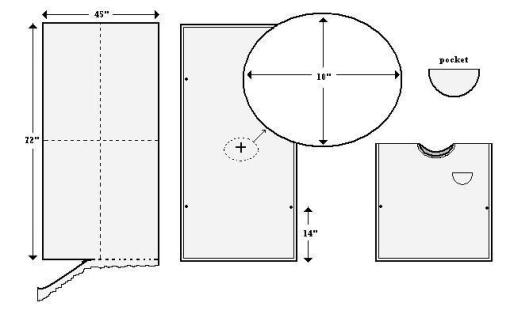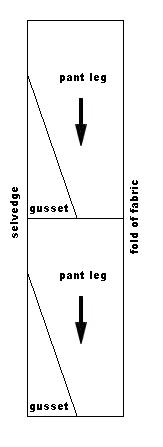 Featured: Best Behavior
Featured: Best Behavior
Stay “kewl” this summer with this gossamer sun serape. It is a cinch to whip up in an afternoon. Take your styling cues from Danish design house, Best Behavior and layer it over your tiny tees and baggy pants.
You will need:
- approx. 2 yds. [1.8m] of transparent fashion fabric, 45” [114 cm] wide such as chiffon
- 1 pkg. of bias binding, 1” [25 mm] wide (matching colour)
- coordinating thread
DIMENSIONS: approximately 34” X 44” [86 cm X 112 cm]
PATTERN

This is a patternless design (a simple block draft). You can plot it directly onto your fabric but you will need to straighten the cut ends of your fabric before you are going to cut. The corners should be 90°. Once that is done, trim away the selvedges.
CUTTING
Cut a rectangle 72” X 45” [183 cm X 114 cm].
ASSEMBLY
- Find the center of the cloth by folding it in half, both lengthwise and widthwise. Mark the location with a pin. Radiating from the center, lightly chalk an arc 5″ [12.5 cm] away from one fold to the other. Carefully cut on chalked line through all layers to create the neck opening. Reserve cut away portion.
- Fold the width of the bias tape in half and align the raw edges of the tape along the FACE side of the neck opening. Stitch around the neck opening using a ¼” [6mm] seam allowance. Grade the seam allowance. Turn bias binding to inside of opening and press seam flat. Topstitch around neck opening.
- Open the fabric flat, FACE side down and machine a narrow double rolled hem along all sides.
- To make the pocket, re-fold the cut away portion from the neck into quarters, with right sides together. Reduce the radius of the arc by 1″ [25mm].
- Open the fabric flat and fold in half , with RST. Stitch around the curved edge, using a ½” [12mm] seam allowance, leaving a small opening to turn-out. Trim the seam allowance close to the stitching. Turn pocket right side out and slipstitch opening closed. Press pocket flat.
- Align pocket to left side of centerfront and edge-stitch pocket to front of garment.
- Fold garment in half and align corners. Measure up from matching corners on each side approximately 14”[35.5cm] . Tack front and back together at this point (●).



